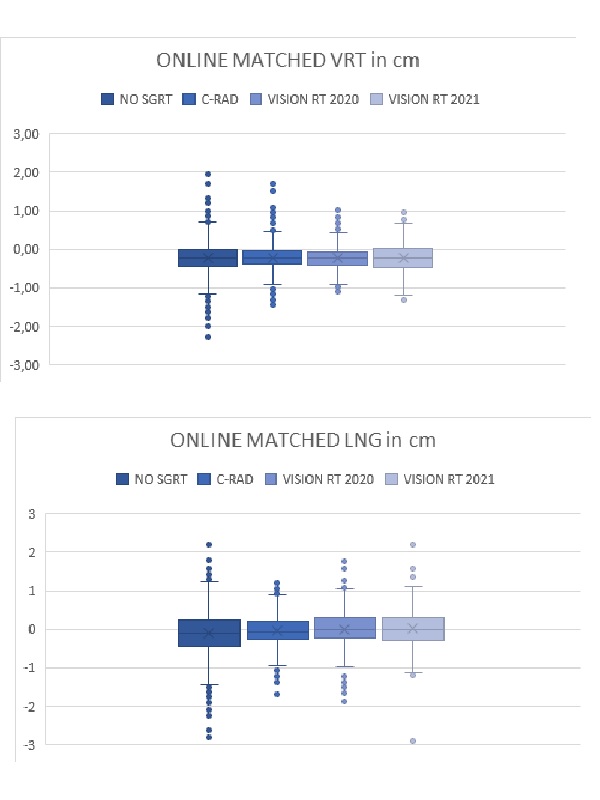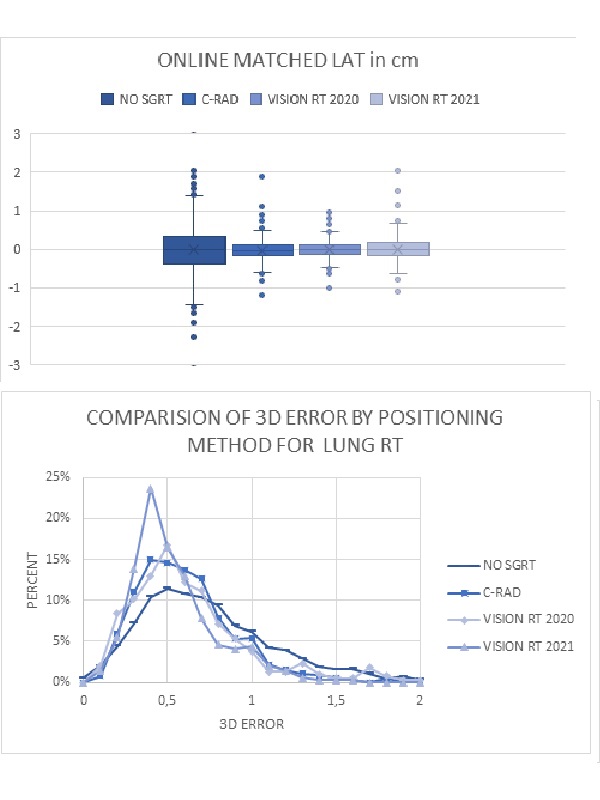The average magnitude of the translations
for group 1 were -0,23 (±0,46) cm; -0,11 (±0,55) cm; -0,02 (±0,66) cm; 0,71 (±0,49) ,
group 2 -0,22 (±0,33) cm ;-0,04 (±0,39) cm; -0,04 (±0,23) cm; 0,57 (±0,32) , group 3
-0,24 (±0,37) cm, -0,02 (±0,67) cm, -0,01 (±0,22) cm, 0,60 (±0,58) and group 4
were -0,22 (±0,37) cm; 0,01(±0,56) cm and 0,00 (±0,31) cm, 0,5 (±0,27) for vertical,
longitudinal, lateral online matched values and 3D error respectively. All F
values were > F critical threshold and all the p values were below
the 0,05 threshold except between group 2&3 (for all residual translational
error and calculated 3D values).

